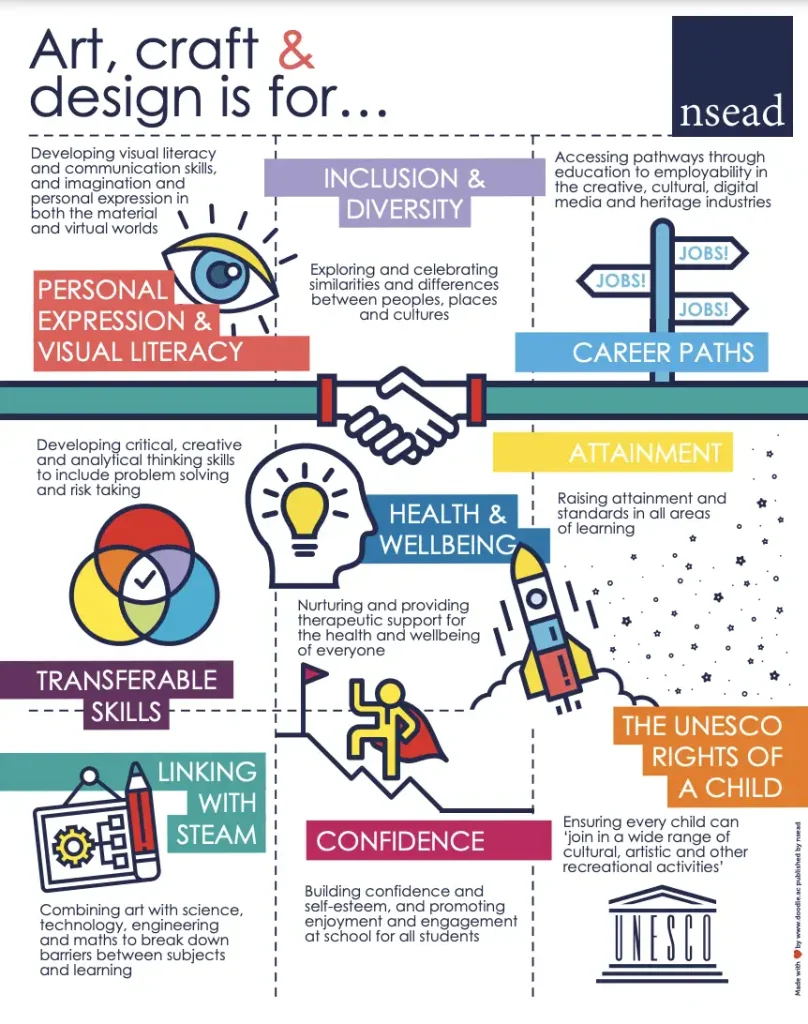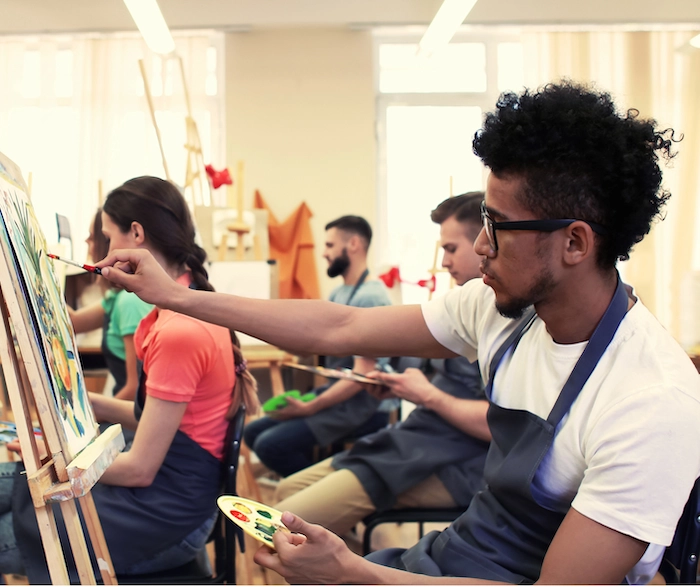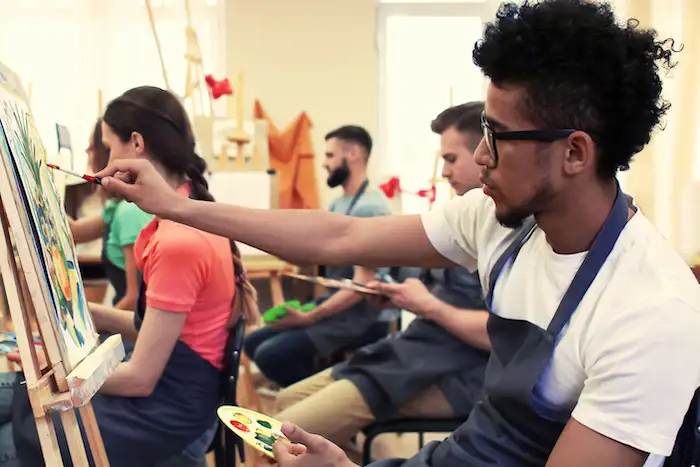Pauline Tambling & Sally Bacon talked to Michele Gregson, General Secretary of NSEAD, about the issues facing art and design education in English schools
The Arts in Schools: Foundations for the Future looks back at the seminal 1982 Gulbenkian Foundation publication, The Arts in Schools: Principles, practice and provision. Between June and September 2022, we convened a series of virtual roundtables with school leaders, teachers, arts education practitioners, academics and policy makers on nine themes in the original report. The new report covers the context in which the original report was written; the practice and provision it envisioned; the immediate impact it had; and how society, education policy and the arts have changed over the past 40 years, concluding with recommendations and guidance for the future.
What are the headline issues for art and design Education?
Lack of time for the subject is an increasing concern. GCSE take-up has fallen over the last decade and teachers report a decrease in curriculum time. Design and Technology curriculum pathways have been absorbed into art and design, reducing student choice, and devaluing the distinction between the two subjects.
In a survey conducted by the All-Party Parliamentary Group (APPG) for art, craft and design education in 2022, the biggest concern reported by art and design teachers was lack of time for the subject (288 mentions). A third (33%) said that there had been a change from pre-pandemic provision and reported that time was an issue. Most respondents reported a time decrease (87.6%).
The impact of the EBacc in England on curriculum time and uptake of the subject was documented in the NSEAD subject report of 2015-16. Over the last decade, GCSE entries for art and design have seen a steady decline, falling to the lowest level since 2000 in 2018. We believe that the seeming recovery in 2019 can be directly attributed to design and technology students being entered for art and design as an alternative to the new design and technology GCSE specification, where entries dropped by 28% that year.

How do you explain the decline?
There are a number of pressures. There’s an over-formulaic approach to project planning and curriculum priorities, de-valuing curiosity, breadth and choice. This is not good for the development of the subject, or for learners.
There is pressure on schools to achieve results, and reduced budgets, leading in some settings to a risk-averse culture that stifles creativity and individual expression. Over recent decades, an over-formulaic approach to project planning and curriculum priorities has de-valued curiosity. This is often for the best of intentions, or in response to budget cuts and examination grade pressures. However, this has been seen as harmful to learning and grades over recent decades, precisely because it lessens the expectation for learner creativity and originality of response. In some circumstances it may lessen choice and self-expression, dictate process steps and actions in response to pre-selected stimuli and artist influences too specifically, resulting in students following a common line of investigation towards predetermined outcomes.
Do you think there is fair access to art and design by all students?
Art and design provision is not meeting the needs of many students. The quality and quantity of opportunity varies according to place and socio-economic factors. The pandemic revealed a troubling gap in equity of opportunity in art and design, with wide regional differences in resources, attainment and expectations. The gap between the state and private sector has also widened. The subject has seen an increasing gender gap, both in participation and attainment, with more and more boys not opting for art and design at GCSE and A Level. At A Level in 2022 there was a 11.3% difference between male and female candidates achieving A/A grades. In GCSE entries in 2022 there was a 20.5% percentage points gap between male and female 7A+ grades, with the gender gap remaining at almost double the number of girls’ to boys’ entries.

We highlight the importance of school and subject leadership in the report and the loss of agency teachers sometimes feel. Is this relevant to art and design?
Subject leadership is thriving in pockets with teachers, school leaders and academics working together to develop co-creative approaches with young people, and transformative curriculum and pedagogical approaches, rooted in social justice.
A positive development over recent times has been a growing determination of art and design educators to resist a culture where teachers are reduced to curriculum operatives, transmitting a fixed canon of knowledge. The work of dedicated groups of teachers, school leaders, artists and academics has led to the development of research and resources, and high-quality CPD to support better practice. Much of this work has focused on developing co-creative approaches with young people, and transformative curriculum and pedagogical approaches, rooted in social justice. Encouragingly, the recent Ofsted Research Review for art and design highlights the influence of school systems, culture and policies on the quality of provision, It urges school leaders to recognise the importance of teachers’ discretion and expertise and to support subject specific CPD.
So the work promotes student agency too? What about Initial teacher education, recruitment and retention?
Recruitment to teacher training is falling in art and design. After a short period of over-supply during 2020-22, recruitment has dropped below target, with art and design having one of the largest changes in reported performance against post-graduate initial teacher training (PGITT) targets between the 2021/22 and 2022/23 training years (90% in 2022/23 compared to 134% in 2021/22). The NFER reports that says nine out of 17 secondary subjects including music, drama and art and design – are expected to be 20 per cent or more below the DfE targets set in 2022-23. A survey in 2022 by the APPG for art, craft and design education revealed that two thirds of art specialists wanted to leave teaching – a much higher number than amongst the general teacher workforce.
And is training provision for primary teachers adequate?
Provision for subject specialist training of primary teachers is not adequate preparation for teaching – in the APPG survey, universities reported the number of hours for art, craft and design as being between 3–12 hours during an entire one-year PGCE course.




